After dad and I realized that we did not draw any special tags in WA and OR this year, our plans fell to OTC, as they often do. But I also had been researching options in Idaho, something that I’ve wanted to do for quite awhile. Dad and I bought our annual OTC archery tags for Oregon and got lucky in the Idaho draw for a couple of cow elk tags.
The first few days in Oregon proved tougher hunting than normal due to increased bow hunting pressure in some of our favorite spots as well as our first encounter with a wolf.
But our luck changed on day 4. We started the day out bugling our way up into some of the most pristine elk country only to find cattle, very little elk sign and no responses to my calls. We worked our way up, around and back down from the fringes of the wilderness to the truck by early afternoon. We were tired from the heat and the steep mileage that day and agreed to hunt from a road system that evening.
Around 4pm, we were driving the last couple miles to our bailing off point from the dirt road and noticed a couple cows feeding right above the road. We never stopped the truck and just drove past and parked around the corner. We quickly threw on our packs and bows and headed straight up the ridge to get on their elevation. With a couple mews, a good sounding bugle responded from where the cows had been spotted. I screamed back a bugle and the bull fired back from his vantage point about 100+ yards away. Dad moved up and I stayed back, using the contour of the finger ridge to hopefully pull the bull to a point where he would have to come to see me and be in dads lap. As I pleaded to the bull to come over with cow whines and exchanged angry bugles, I noticed an elk working up the finger ridge, below me. Having an arrow knocked already, I laid down my bugle tube and after one attempt to draw back, I got it to full draw on the second attempt. I could now tell it was a spike. With that motion, the spike noticed and stopped square on at 25 yards behind a couple small trees. I held and held at full draw when finally the bull turned broadside and started moving to his left. With the reed in my mouth, I mewed. When he stopped, I let it fly. The shot felt smooth and automatic as I watched him run down and out of sight. I cow called continually until dad yelled from down below, “He’s down!” The bull had ran about 40+ yards and crashed in the dried berry bushes, near where dad had been standing in his set up. I was elated! Complete pass through of the lungs.
Ironically, we had spent much of the day frustrated and questioning how bad we wanted to hunt elk in the steepness of the wilderness with nothing to show for it. And now I was notching my tag on my 2018 archery bull with the road in sight below us. We elected to gut the bull and drag him down to the berm above the road. I never thought I would load an elk whole in the back of a truck based off our style and terrain we typically hunt but that’s just what we did that day. I backed up as far up the berm as I could with the tailgate down and slid him in. Instead of swatting at flies and bees and putting our EXO packs to use, we took our time breaking down the bull in camp that night with a campfire in the background and glasses of whiskey nearby.
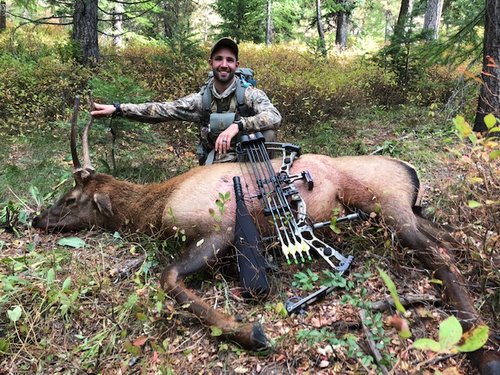
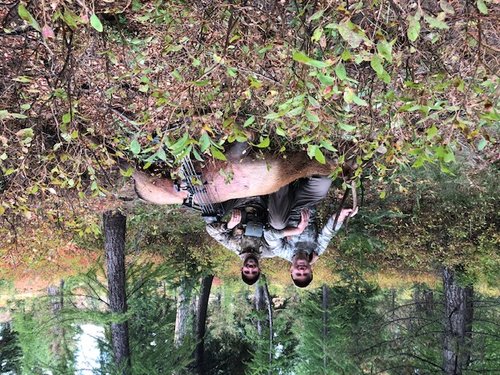
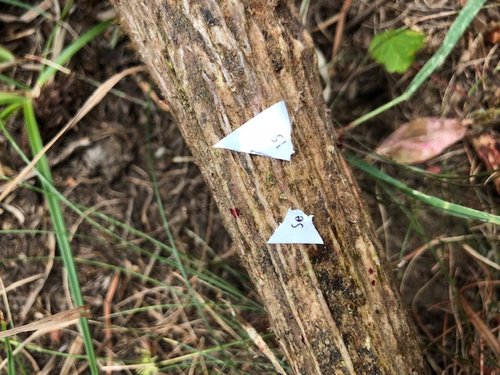
Next up, was Idaho. I really enjoy the research aspect of hunting and going to new elk country in a new state had me really excited and up for the challenge. I ordered maps, scanned google earth and onX, spoke with the local biologist a couple times over the course of the spring and summer, exchanged pm’s with several forum members on different sites. Overlaying all that information, I came up with a list of about 10 general areas to work through. Knowing that without putting boots to the ground scouting before the season, I would be relying heavily on that list of spots and would not hesitate to move on if one spot didn’t pan out.
Dad and i made the 10 hour trek over and stayed in a motel for the night. The next morning, we woke up early and headed to where we planned to set up our base camp.
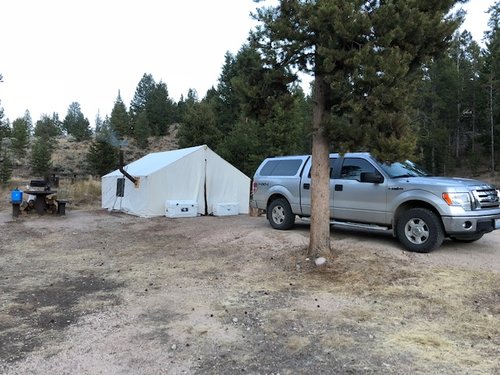
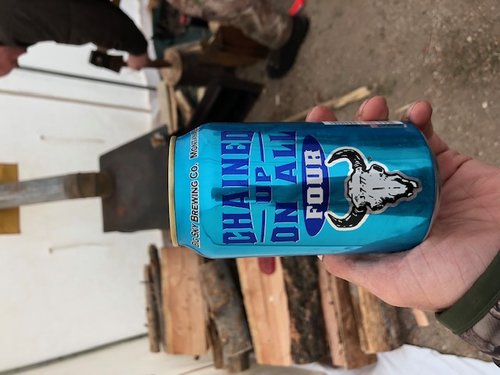
Opening morning yielded an opportunity to fill a tag but elected to pass, as I could not 100% confirm it wasn’t a spike. The herd moved off after catching our wind and we elected to move onto another spot. Long story short, the next 24 hours had us hunting areas that showed little to no fresh elk sign, no bugles to be heard and Nobel to be seen. We ran into a few other hunters around the roads and no one was seeing anything but deer in the first two days.
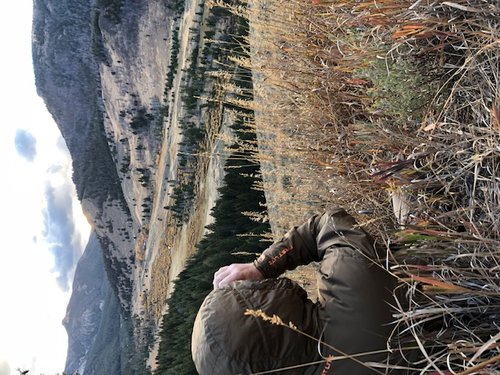
Day 3. Working down our list of spots, we ran into town to fuel up and make a phone call to the field office in hopes of running some ideas by the biologist now that we had spent a few days in this country and had fresh perspective. Unfortunately, the bio was out and the guy answering the phone said I was the 6th elk hunter to call that day with similar reports. He said the fact we had found elk already was better than most the phone calls he had gotten. Not to worry, I had half my list go but was starting to temper my expectations for the hunt. The lack of elk sign in roadless or elky places had us scratching our heads a little. I hung up the phone and away we went to the next spot on our list. The plan was to gain a vantage point into some remote country that held sanctuary, feed and water. We got comfortable in our perch, took a nap in the sun and enjoyed the views of aspen lined drainages, sage and ponderosa ridges and rimrock cliffs from 2 pm on. The elk hunting had been tough so far but life was so good! Finally, the last hour of light was productive. Across the canyon, two herds fed out. One was in a very tough spot to get to but the other herd of 12+ was doable for the next morning. With light fading, we bailed off our vantage point and drove to the nearest road to make a plan of which finger to ascend in the morning and mark on our gps. We were excited but cautiously optimistic in our plan.
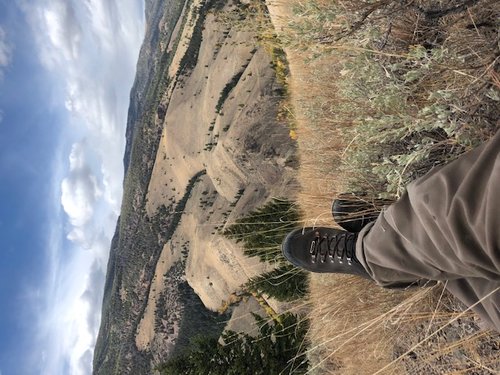
Day 4 is when it all came to fruition. In the dark, we parked the truck, turned on the headlamps and put the trekking poles to use as we slowly moved up the mountain toward the drainage where the elk had been spotted the night before. About 9 am, we peered over the rimrock and began dissecting the country. Finally, dad picked out a couple cows feeding into a large patch of scrub oak, not far from where we had seen them prior. We watched until the last cow dissolved into the shade of the brush and timber. We talked about our options- sit and wait for them to feed back out that evening or get on their elevation with the wind right and put our black tail/still hunting experience to work. My dad encouraged us to go for it. I was skeptical but the thought of sitting there all day without eyes on the herd and hoping that they didn’t feed elsewhere out of sight convinced me. And that’s just what we did. Once on that bench, we spread out about 10 yards and crept towards where we thought the elk were. Step by step. I glanced at dad to my left and looked back to my right, into the sage opening and ridge line, when my dads gun fired. Dad made a great shot offhand on a cow that had picked him off and stood up out of her bed at 60 yards. She dropped quickly as the herd erupted out of the scrub oaks and towards the spine of the ridge. I was already moving towards the ridge with a pack on one shoulder and rifle in hand. “You good?” Dad yelled that his was down. With that, I ran after the herd until I saw them stop on the ridge line. I dropped down in the sage, rested my rifle over my pack and waited for one of the big cows to step out from the rest of the herd. When she did, I made a shot at 100 yards and she was down within 10. 30 seconds a part and about a 150 yards a part, we had tagged out. Can’t believe it happened like that but such a cool experience with dad. It just came together.
We congratulated each other, snapped a couple pics and then made a plan to get to work. With the late morning sun beaming down, we wasted no time individually breaking down our own elk. I’ve done a couple deer by myself but never an elk. What a difference! About two hours later, we each had all the meat hanging in game bags in the shade of trees, loaded up the packs and made one heavy load back to the truck. The plan was to come back in the morning to make two more trips with meat. We celebrated (lightly) that night at camp. I had a feeling of contentment of being successful but still feeling a little leery of the day to come. Two more trips into that country was going to be big task.
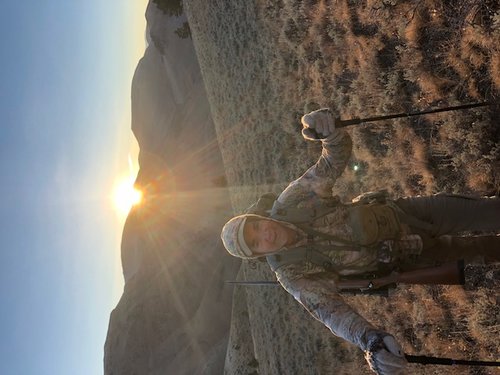
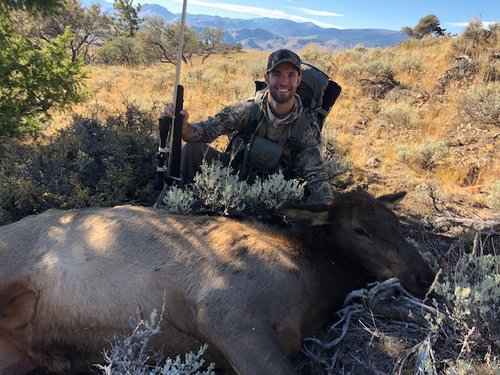
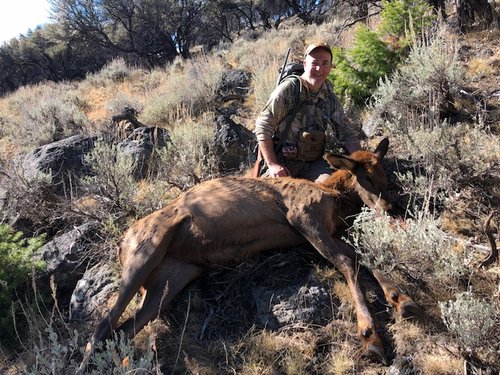
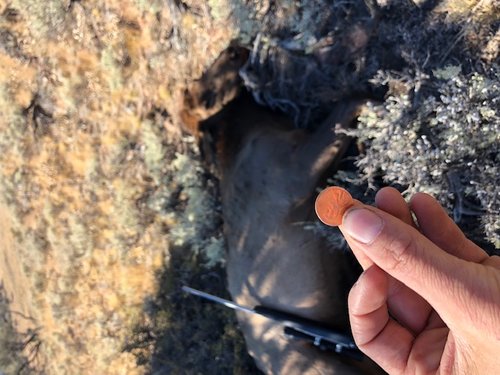
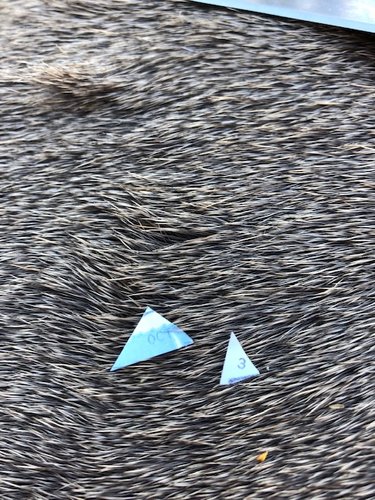
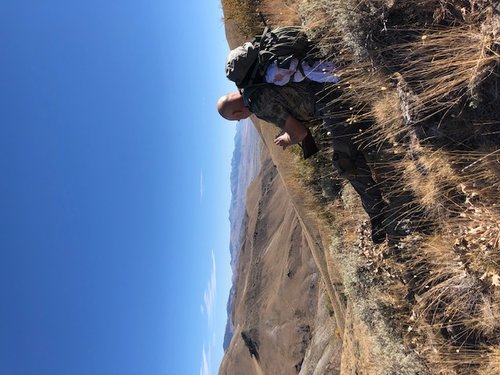
Next morning found us heading back up with scaled down packs and layers. Another load of hind and front quarters made its way down to the truck. We bbq’d some lunch, chugged water and Gatorade and let our bodies rest for about an hour and a half. Then back up for two packs full of all the back straps, tenderloins, neck, rib and brisket scraps. Roughly, we did three round trips, 9.3 miles and 7200’ loss/gain. Super proud of my dad (who turned 60 this year) and thankful we made it out without anything more than sore muscles. I kept asking him how he was doing and he would just wipe the sweat from his face and saw, “Just pure desire.” And then keeping moving. He is who aspire to be.
That evening in camp we enjoyed whiskey sitting around the wood stove, the feeling of success on a tough hunt and reliving our experiences from the week. Aside from the obvious, we really enjoyed seeing new elk country with sage and aspens, moose and antelope and meeting lots of super friendly folks.
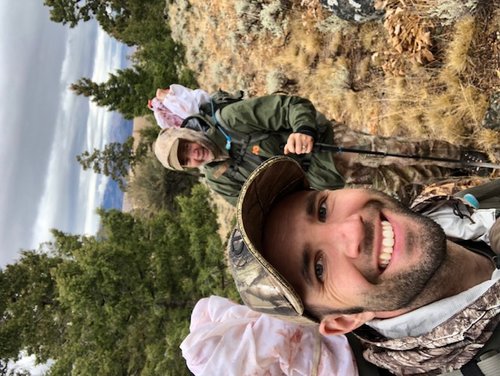
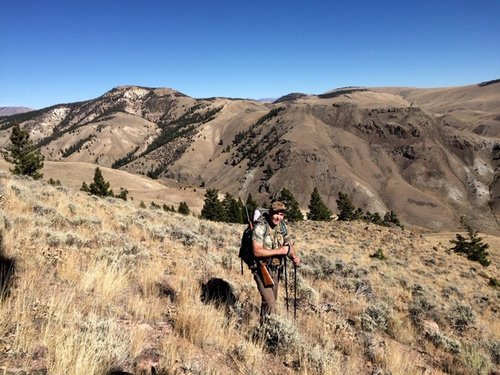
Couple lessons learned from the hunts:
- Use the terrain and topography to your advantage when calling elk. Make them investigate- don’t let them see you and hang up outside of your setup.
- Picked up a lot of nuggets listening to podcasts with the ElkNut. I really incorporated a lot being intentional with my sounds. It let to a punched tag and a few close opportunities.
- Before you call biologists or pm forum members, do as much research and game planning on your own as possible. To me, that is part of the fun but also leads to better conversations.
- Drink the cool aid- OnX is that good.
- I will always pack trekking poles, when you want them, they’re like having 4wd.
- Don’t waste time in an area that isn’t producing (elk sightings or fresh sign). On a relatively short hunt, time is so precious. Keep moving, don’t give up.
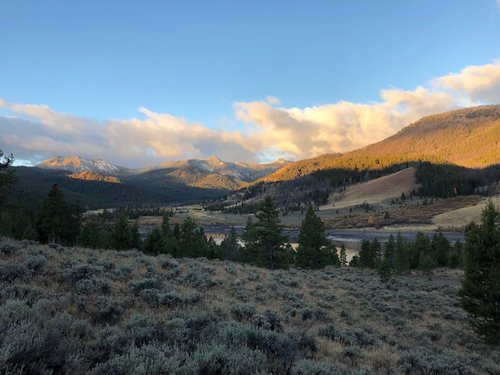
Hope everyone has had a great season. Thanks for reading.
The first few days in Oregon proved tougher hunting than normal due to increased bow hunting pressure in some of our favorite spots as well as our first encounter with a wolf.
But our luck changed on day 4. We started the day out bugling our way up into some of the most pristine elk country only to find cattle, very little elk sign and no responses to my calls. We worked our way up, around and back down from the fringes of the wilderness to the truck by early afternoon. We were tired from the heat and the steep mileage that day and agreed to hunt from a road system that evening.
Around 4pm, we were driving the last couple miles to our bailing off point from the dirt road and noticed a couple cows feeding right above the road. We never stopped the truck and just drove past and parked around the corner. We quickly threw on our packs and bows and headed straight up the ridge to get on their elevation. With a couple mews, a good sounding bugle responded from where the cows had been spotted. I screamed back a bugle and the bull fired back from his vantage point about 100+ yards away. Dad moved up and I stayed back, using the contour of the finger ridge to hopefully pull the bull to a point where he would have to come to see me and be in dads lap. As I pleaded to the bull to come over with cow whines and exchanged angry bugles, I noticed an elk working up the finger ridge, below me. Having an arrow knocked already, I laid down my bugle tube and after one attempt to draw back, I got it to full draw on the second attempt. I could now tell it was a spike. With that motion, the spike noticed and stopped square on at 25 yards behind a couple small trees. I held and held at full draw when finally the bull turned broadside and started moving to his left. With the reed in my mouth, I mewed. When he stopped, I let it fly. The shot felt smooth and automatic as I watched him run down and out of sight. I cow called continually until dad yelled from down below, “He’s down!” The bull had ran about 40+ yards and crashed in the dried berry bushes, near where dad had been standing in his set up. I was elated! Complete pass through of the lungs.
Ironically, we had spent much of the day frustrated and questioning how bad we wanted to hunt elk in the steepness of the wilderness with nothing to show for it. And now I was notching my tag on my 2018 archery bull with the road in sight below us. We elected to gut the bull and drag him down to the berm above the road. I never thought I would load an elk whole in the back of a truck based off our style and terrain we typically hunt but that’s just what we did that day. I backed up as far up the berm as I could with the tailgate down and slid him in. Instead of swatting at flies and bees and putting our EXO packs to use, we took our time breaking down the bull in camp that night with a campfire in the background and glasses of whiskey nearby.



Next up, was Idaho. I really enjoy the research aspect of hunting and going to new elk country in a new state had me really excited and up for the challenge. I ordered maps, scanned google earth and onX, spoke with the local biologist a couple times over the course of the spring and summer, exchanged pm’s with several forum members on different sites. Overlaying all that information, I came up with a list of about 10 general areas to work through. Knowing that without putting boots to the ground scouting before the season, I would be relying heavily on that list of spots and would not hesitate to move on if one spot didn’t pan out.
Dad and i made the 10 hour trek over and stayed in a motel for the night. The next morning, we woke up early and headed to where we planned to set up our base camp.


Opening morning yielded an opportunity to fill a tag but elected to pass, as I could not 100% confirm it wasn’t a spike. The herd moved off after catching our wind and we elected to move onto another spot. Long story short, the next 24 hours had us hunting areas that showed little to no fresh elk sign, no bugles to be heard and Nobel to be seen. We ran into a few other hunters around the roads and no one was seeing anything but deer in the first two days.

Day 3. Working down our list of spots, we ran into town to fuel up and make a phone call to the field office in hopes of running some ideas by the biologist now that we had spent a few days in this country and had fresh perspective. Unfortunately, the bio was out and the guy answering the phone said I was the 6th elk hunter to call that day with similar reports. He said the fact we had found elk already was better than most the phone calls he had gotten. Not to worry, I had half my list go but was starting to temper my expectations for the hunt. The lack of elk sign in roadless or elky places had us scratching our heads a little. I hung up the phone and away we went to the next spot on our list. The plan was to gain a vantage point into some remote country that held sanctuary, feed and water. We got comfortable in our perch, took a nap in the sun and enjoyed the views of aspen lined drainages, sage and ponderosa ridges and rimrock cliffs from 2 pm on. The elk hunting had been tough so far but life was so good! Finally, the last hour of light was productive. Across the canyon, two herds fed out. One was in a very tough spot to get to but the other herd of 12+ was doable for the next morning. With light fading, we bailed off our vantage point and drove to the nearest road to make a plan of which finger to ascend in the morning and mark on our gps. We were excited but cautiously optimistic in our plan.

Day 4 is when it all came to fruition. In the dark, we parked the truck, turned on the headlamps and put the trekking poles to use as we slowly moved up the mountain toward the drainage where the elk had been spotted the night before. About 9 am, we peered over the rimrock and began dissecting the country. Finally, dad picked out a couple cows feeding into a large patch of scrub oak, not far from where we had seen them prior. We watched until the last cow dissolved into the shade of the brush and timber. We talked about our options- sit and wait for them to feed back out that evening or get on their elevation with the wind right and put our black tail/still hunting experience to work. My dad encouraged us to go for it. I was skeptical but the thought of sitting there all day without eyes on the herd and hoping that they didn’t feed elsewhere out of sight convinced me. And that’s just what we did. Once on that bench, we spread out about 10 yards and crept towards where we thought the elk were. Step by step. I glanced at dad to my left and looked back to my right, into the sage opening and ridge line, when my dads gun fired. Dad made a great shot offhand on a cow that had picked him off and stood up out of her bed at 60 yards. She dropped quickly as the herd erupted out of the scrub oaks and towards the spine of the ridge. I was already moving towards the ridge with a pack on one shoulder and rifle in hand. “You good?” Dad yelled that his was down. With that, I ran after the herd until I saw them stop on the ridge line. I dropped down in the sage, rested my rifle over my pack and waited for one of the big cows to step out from the rest of the herd. When she did, I made a shot at 100 yards and she was down within 10. 30 seconds a part and about a 150 yards a part, we had tagged out. Can’t believe it happened like that but such a cool experience with dad. It just came together.
We congratulated each other, snapped a couple pics and then made a plan to get to work. With the late morning sun beaming down, we wasted no time individually breaking down our own elk. I’ve done a couple deer by myself but never an elk. What a difference! About two hours later, we each had all the meat hanging in game bags in the shade of trees, loaded up the packs and made one heavy load back to the truck. The plan was to come back in the morning to make two more trips with meat. We celebrated (lightly) that night at camp. I had a feeling of contentment of being successful but still feeling a little leery of the day to come. Two more trips into that country was going to be big task.






Next morning found us heading back up with scaled down packs and layers. Another load of hind and front quarters made its way down to the truck. We bbq’d some lunch, chugged water and Gatorade and let our bodies rest for about an hour and a half. Then back up for two packs full of all the back straps, tenderloins, neck, rib and brisket scraps. Roughly, we did three round trips, 9.3 miles and 7200’ loss/gain. Super proud of my dad (who turned 60 this year) and thankful we made it out without anything more than sore muscles. I kept asking him how he was doing and he would just wipe the sweat from his face and saw, “Just pure desire.” And then keeping moving. He is who aspire to be.
That evening in camp we enjoyed whiskey sitting around the wood stove, the feeling of success on a tough hunt and reliving our experiences from the week. Aside from the obvious, we really enjoyed seeing new elk country with sage and aspens, moose and antelope and meeting lots of super friendly folks.


Couple lessons learned from the hunts:
- Use the terrain and topography to your advantage when calling elk. Make them investigate- don’t let them see you and hang up outside of your setup.
- Picked up a lot of nuggets listening to podcasts with the ElkNut. I really incorporated a lot being intentional with my sounds. It let to a punched tag and a few close opportunities.
- Before you call biologists or pm forum members, do as much research and game planning on your own as possible. To me, that is part of the fun but also leads to better conversations.
- Drink the cool aid- OnX is that good.
- I will always pack trekking poles, when you want them, they’re like having 4wd.
- Don’t waste time in an area that isn’t producing (elk sightings or fresh sign). On a relatively short hunt, time is so precious. Keep moving, don’t give up.

Hope everyone has had a great season. Thanks for reading.




